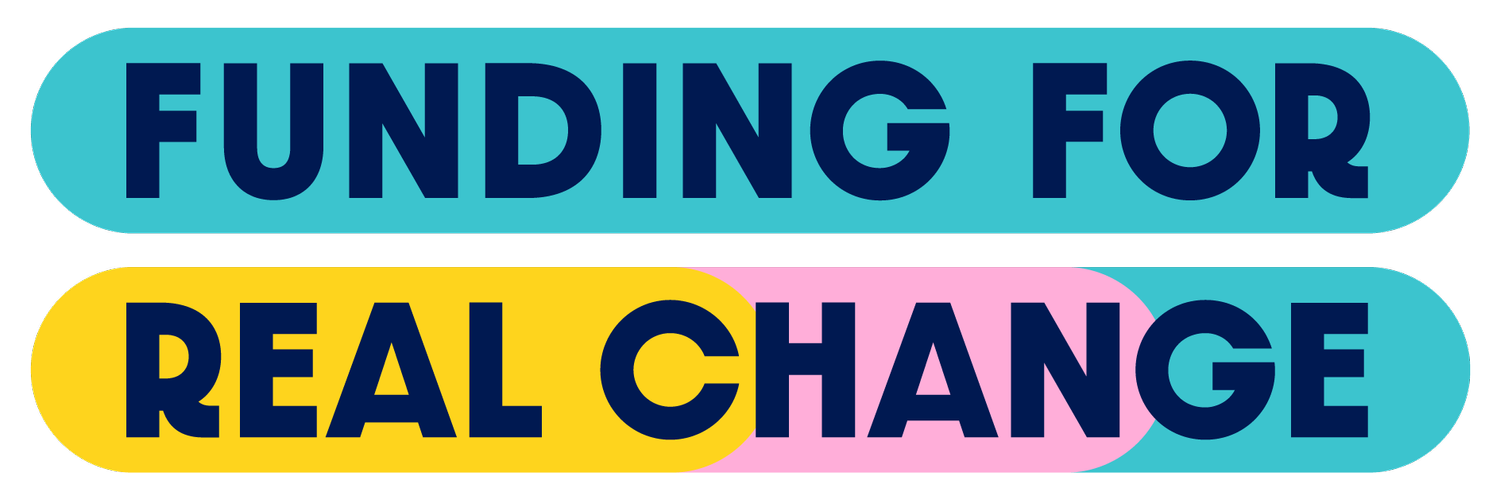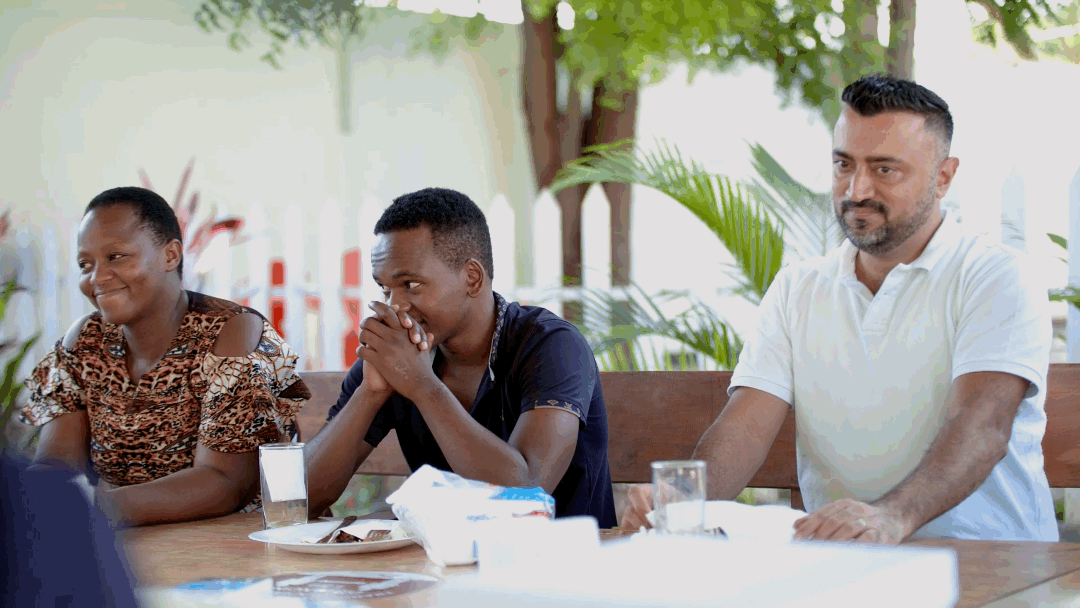Twaweza
+ Ford Foundation
Video by Paul Johannessen

Learn more about:
Ford Foundation
Learn more about:
Twaweza

The Ford Foundation: A Decade of Change
New leadership, new direction
These fact-finding efforts revealed that many of the organizations supported by Ford and other foundations were grossly under-recovering costs in project grants, operating with low reserves, and experiencing persistent deficits and other indicators of poor financial health. On the frontlines of an ambitious social change agenda, they were struggling to make ends meet with little to no safety net. The startling findings painted a picture of an untenable status quo. The foundation’s grantmaking practices – including a de facto indirect cost policy of 10 percent and inconsistent calculations across 1,500 grants and over 40 countries per year – would need to be transformed.
“We were funding organizations over three, five, ten years and had never asked these questions before...that gave us the ammunition to say we need to change our practices and do better.”
Jim Gallagher, Director, Grants Management
What does it mean to be a social justice funder? Nearly a decade ago, the Ford Foundation set out on a journey to answer this question from a new angle, interrogating not only what it was funding but also how it was funding. When Darren Walker became President in 2013, he sought to shine a brighter light on the corrosive effects that traditional approaches to project funding can have on the sustainability of organizations that raise revenue from private foundations and other grantmaking entities. He began commissioning research and mobilizing staff to engage grantee partners to understand the extent of the problem – how chronic underpayment of indirect costs was depriving civil society organizations of the resources they need for institutional growth, development, and long-term resilience.

Evidence-based action: A holistic approach
Armed with this data, Darren and his team charted a path to align Ford’s internal grantmaking operations and institutional culture with its outward mission to tackle the root causes of inequality in all of its forms. In the fall of 2015, the foundation announced three major changes, all part of a comprehensive approach to flexible and equitable grantmaking that continues to evolve today:
A minimum 20 percent indirect cost rate in project grants. In January 2023, the foundation’s indirect cost policy was increased to 25 percent.
1
Program officers have been trained to actively engage grantee partners in deeper conversations about their financial health, ask the right evaluative questions, and dispel the common misperception that presenting a low indirect cost rate is desirable or necessary to receive a grant.
Additionally, Ford has worked with external partners to develop a financial health analysis tool for grants management staff, as well as a user-friendly tool for nonprofits to calculate their own indirect cost rates, enabling them to present their true costs to funders and advocate for their needs.
Emphasis on general support grantmaking. Since 2016, the proportion of Ford’s grantmaking made in the form of general or core support has gone from 36 percent to 81 percent.
2
The BUILD Program, which provides five-year unrestricted and institutional strengthening grants to select grantees. Participants engage in cohort-based learning and are equipped with technical assistance, evaluations, strategic communications, and funder engagement. Originally envisioned as a five-year, $1 billion commitment, the program has since been expanded to encompass 12 years and $2 billion.
3

An ecosystem, sector-wide approach
The story of Ford’s transformation is inextricably linked to the changes gaining momentum in the philanthropic sector broadly today. As improvements were being made internally, Darren was simultaneously reaching out to other major U.S. foundation presidents to inspire collective action. In 2016, he joined forces with four others to gather empirical evidence and explore solutions to the thorny indirect cost coverage problem. In 2018, a landmark study revealed that the indirect cost rates actually incurred by their grantee partners ranged from 12 to 60 percent, with a median of 31 percent. Funder allocations were missing the mark by an average of 17 percentage points.
“A minimum indirect cost rate becomes so critical when you talk about trust and partnership in philanthropy because foundations over many years have often not proven themselves to be trustworthy partners. [Nonprofits] hesitate to tell us if they have an indirect cost rate that is higher than what they think the foundation would like to pay. By setting a minimum indirect cost rate, we remove some of that power dynamic. That trust is not just granted to us as foundations, and we have no right to expect it. We really do have to earn it.”
Kathy Reich, Director, BUILD, Ford Foundation
Out of this research came convenings with other foundations about a sector-wide approach. In 2019, 40+ staff from 12 funders came together to launch the Funders for Real Cost, Real Change (FRC) collaborative. The Funding for Real Change website presents their work to develop meaningful solutions to improve equity and flexibility in grantmaking processes and practices.


Twaweza: Courage and Innovation
“We can make it happen”
As real change was underway at Ford’s New York headquarters in 2015, in Tanzania, Aidan Eyakuze was stepping into his role as Executive Director of Twaweza, a civil society organization that pioneered a funding model that has enabled it to not just survive but grow and strengthen in difficult economic and political terrain.
The organization’s mission, carried out across Tanzania, Uganda, and Kenya, is threefold: to demonstrate citizens’ ability to collectively exercise their agency; to enable their voices to influence government decision-making at all levels; and to promote and protect open civic space for them to freely assemble, speak, and act.
Aptly named, Twaweza means “we can make it happen” in Swahili – a remarkable self-fulfilling prophecy.
Aidan and his team of 40 staff push back against authoritarian tendencies by government and provide the space citizens need to be citizens, rather than subjects or passive recipients of government largesse. Tackling this immense challenge necessitates redressing historical power imbalances and improving engagement between governments and citizens.
This strategic approach is mirrored in Twaweza’s funding model, which involves efforts to shift deep-seated norms in traditional philanthropy and fundamentally redefine the relationships between funders and civil society.

Overcoming indirect costs: Basket funding and trust-based philanthropy
Twaweza has always maintained that it needs to be as independent as possible in order to work on its expansive mission and be creative and nimble about it. Since its inception in 2009, the organization has operationalized what it calls ‘basket funding,’ wherein it does not prepare individual project budgets but rather has one comprehensive strategy with one budget. Funders, like the Ford Foundation, are inspired to put their money into one ‘basket,’ and the organization can draw from it to carry out its programming. Indirect costs typically account for between 25 and 30 percent of the budget – which, as reflected in the research championed by Ford and the FRC collaborative, would exceed insufficient funder allocations and be under-recovered if it relied upon traditional project grantmaking.
Beyond being a flexible funding mechanism and effective in that it enables Twaweza to cover all of its costs, basket funding has transformative value. Indirect costs become less relevant because funders are pushed to shift their mindset and consider and trust grantees as partners in the truest sense of partnership – not merely as beneficiaries or implementing tools to advance their strategic plans.
The rigmarole and unwarranted scrutiny over indirect costs are rendered unnecessary, for the costs are simply understood to be essential to delivering on a mutually agreed set of strategic objectives.
“We're going to do this together. We're not your implementing agency. We're co-creating partners. We believe in the same overall goals and strategic direction, so let us forge a partnership rather than a funder-grantee relationship. You'll learn from us and we shall learn from you.”
Aidan Eyakuze, Executive Director, Twaweza

Breaking the cycle: From 2009 to present day
Twaweza is an inspiring case in that from the outset it did not wait for doors to be opened, for funders to reform harmful practices. Its innovative funding model emerged from the refusal of the organization’s founder, Rakesh Rajani, and founding Board members to become yet another casualty of the nonprofit starvation cycle. They knew from experience that they would face an uphill battle in the philanthropy ecosystem. Traditional funders tend to place an outsized and unrealistic value on short-term and quantifiable outcomes and, thus, prioritize funding nonprofits that can report them as such. The negative impacts of scarce funding would be further compounded by the significant threats and constraints they would face due to the political nature of their work.
So, how were they able to persuade foundations, governments, and others to participate in basket funding? At this point in time, some large funders were beginning to experiment with trust-based financing and unrestricted funding.
The enabling environment was beginning to take shape.
Rakesh Rajani already had a strong track record of being innovative, data-driven, and courageous in civil society, challenging public policy – even politicians and leaders of nations – on priority-setting and action. He strategically and confidently communicated to funders that Twaweza, too, would be a leader and innovator in its approach to empowering citizens and advancing social justice. Twaweza would be asking tough, fundamental questions and – with the resources, trust, and equal partnership of their funders – would be able to unlock solutions by leveraging unmitigated grit, social capital and coalition-building, transparency and accountability, scientific rigor and technology, media and communications, and much more.
“We’ve had to fight our ground but, so far, we’ve been able to succeed.”
Aidan Eyakuze, Executive Director, Twawesa
Twaweza’s early funders recognized its value and put their trust, and resources, in the basket. Under Aidan’s leadership since 2015, they have continued to do so.
Twaweza’s very survival has demonstrated the value of equitable funding, the importance of covering overhead, and how flexibility is absolutely vital to civil society. Because of the basket funding model, it has been able to not just keep its lights on but grow by investing resources in institutional development, as well as building its reserves. The organization’s management systems are studiously transparent, 90 percent of which are cloud-based, which enables it to perform and demonstrate tremendous financial integrity.
Twaweza’s strong organizational infrastructure and systems contribute immensely to its resilience, particularly in the face of government surveillance and interference, and even security concerns.
Several years ago, for example, Aidan’s personal safety was in jeopardy as the Tanzanian government targeted him and withheld his passport, as well as passed a law to crack down on public access to statistical information – which was later reversed due to the continued hard work of Twaweza and a coalition of other civil society organizations.
The relationship that Twaweza has with its funders, its staying power, and its undeniable impact in East Africa and beyond are emblematic of, hopefully, what is on the horizon for philanthropy: trust, equity, innovation, and sustainability.
Written By Alexandra Solomon







